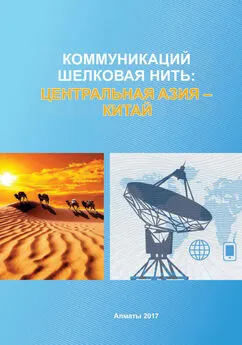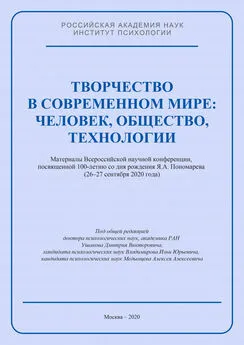Коллектив авторов - Регионы в современном мире: глобализация и Азия. Зарубежное регионоведение
- Название:Регионы в современном мире: глобализация и Азия. Зарубежное регионоведение
- Автор:
- Жанр:
- Издательство:неизвестно
- Год:неизвестен
- ISBN:978-5-00165-178-9
- Рейтинг:
- Избранное:Добавить в избранное
-
Отзывы:
-
Ваша оценка:
Коллектив авторов - Регионы в современном мире: глобализация и Азия. Зарубежное регионоведение краткое содержание
Регионы в современном мире: глобализация и Азия. Зарубежное регионоведение - читать онлайн бесплатно ознакомительный отрывок
Интервал:
Закладка:
In this complicated context, the association aims to increase its influence upon the global development. The globalizing problems of the Southeast Asian territorial domain requires global solutions. At the same time, ASEAN’s attempts to explore the potential of intra-ASEAN cooperation, be it ASEAN Free Trade Area (AFTA), ASEAN Investment Area (AIA) and other multilateral initiatives, have reached the maturity level and demonstrated limited efficiency in developing cooperation with ASEAN’s extra-regional partners. Among the latter, China’s example is worthy of note. After the establishment of the China-ASEAN Free Trade Area (CAFTA) the association encountered a growing trade deficit (strongly magnified by China’s mega-strategy the Belt and Road Initiative). Responding to this trend, the association has to incentivize its other extra-regional partners to increase trade and investment exchanges.
Contrary to ASEAN’s expectations, however, the response of these partners has come in the form of a politicized project rather than a headlong rush to invest in Southeast Asia. The revitalization of the Indo-Pacific region with a clear anti-Chinese agenda may well marginalize the ASEAN-led venues of multilateral dialogue.
The challenges presented by the afore-discussed developments raise a logical question: to what extent has ASEAN developed the safety mechanisms of its policy which will assist the association in its journey to the “brave digital world”? Stating that the foundation is shaky at best, it is expedient to specify what this emerging reality means for the association.
Asean and the Digital Winds of Change
Outlining the influence of the presently evolving digitalization on ASEAN and its member states, the following points deserve distinguishing.
First, the global economy faces a kind of “productivity paradox”, as the exponential increase in technological development is not accompanied by the commensurate rise of productivity. Technologically advanced solutions, like gaming, interactive advertising, on-line shopping etc., focus on consumption and entertainment rather than production. For the ASEAN states, this scenario leads to a serious crisis of values as it undermines the East Asian work ethics as a pivotal prerequisite for new economic success stories.
Second, the Fourth Industrial Revolution incentivizes the association to seriously revise its formats and initiatives of economic regionalism. The present regulatory frameworks of multilateral trade, be it the General Agreement on Tariffs and Trade (GATT), the General Agreement on Trade in Services (GATS) or the Agreement on Trade-related Aspects of Intellectual Property Rights (TRIPS Agreement) were developed before the present digitalization of international trade. Accordingly, these frameworks do not grasp the present essence of digital products and services. This incentivizes the association to perform a double-edged task – to digitally support its multilateral economic initiatives and to upgrade their regulatory formats, both under serious time constraints.
Lastly, an increasingly worrying trend resulting from the on-going digital exchanges is a decrease of internal manageability in the Southeast Asian states. Among the noticeable developments, the so-called eco-chambers are noteworthy. The grass-root citizens subscribe to the media resources, including those that cover politicized issues on religion, ethno-separatism etc., which correspond to their preferences and ignore alternative sources of information 42 42 Tapsell R. 2018 Echo Chambers and a Sectarian Public Sphere in Southeast Asia. ASEAN Focus. URL: https://www.iseas.edu.sg/images/pdf/ASEANFocus%20Oct%202018.pdf (date of access: 27.12.2019).
. Apart from spreading fake news, this allows politicians to manipulate the public opinion during the election campaigns, as well as to mobilize, should the need arise, large masses of people to anti-government protests. Even more significant aftereffect for ASEAN member states is the rise of terrorist activity in the digital sphere. In the Internet, terrorists may carry out their illegal activities without the risk of imprisonment while crypto-currency and blockchain technologies can be used for financing acts of terrorism. Moreover, in the Internet the dissemination of extremist literature is easy as this can be done quickly and in great numbers.
A relatively new but critically important development is the politicization of the dialogue between ASEAN and its partners, mainly China and the United States, in the digital sphere. As China’s and the US’ mega-strategies the Belt and Road Initiative and the Indo-Pacific region further evolve, their digital components come into conflict ASEAN’s interests.
China’s Digital Silk Road as part of the BRI is premised upon Beijing’s intention to set the standards of digital cooperation from both “hard” and “soft” infrastructure perspective. As China strengthens its positions in the international industrial cooperation, it expands the reach of its ICT solutions. A representative example is the railway that will connect Laos and China includes the ICT-services accounting for 3.67 million dollars 43 43 Four companies to provide ICT services for China-Laos railway // China Daily. URL: https://www.chinadaily.com.cn/business/2017-01/11/content_27922745.htm (date of access: 28.12.2019).
. Of equal, if not greater, importance is the supportive function of China’s digital operating systems for the Chinese companies which expand its activity abroad and, by using the Alibaba Cloud and the data centers in other countries, have very few operating costs. This means that ASEAN’s industrial sector will be naturally slipping into China’s rules of digital game.
The security implications of the Digital Silk Road for ASEAN are also likely to be far-reaching. As Southeast Asia integrates in China’s digital space, the aftereffects will range from the PRC’s possibilities to manipulate information during the elections (for instance, at the electronic voting and the vote-count procedures) to gathering security-related information. If this scenario even partially materializes, the degree of ASEAN’s vulnerability vis-à-vis China may well increase exponentially.
The US-ASEAN cooperation also includes the digital component. Of note is the US-ASEAN Cyber Dialogue. In the view of the US, ASEAN is a fast-growing market for digital services. The US-ASEAN Business Council estimates that there are 914 million active mobile connections in ASEAN, almost 1.5 times its population 44 44 ASEAN’s Digital Economy is Projected to Exceed $240 Billion by 2025 // US-ASEAN Business Council. URL: https://www.usasean.org/why-asean/digital-economy (date of access: 28.12.2019).
. But the cyber-security remains underdeveloped, because of which in November 2019 the first session of the US-ASEAN cyber dialogue was convened 45 45 Parameswaran P. What’s Behind the New US-ASEAN Cyber Dialogue? // The Diplomat.URL:https://thediplomat.com/2019/10/whats-behind-the-new-us-asean-cyber-dialogue/ (date of access: 29.12.2019).
. The Indo-Pacific Region as the response to the BRI also has the digital narrative. Of note is the US’ Free and Open Indo-Pacific Strategy is supplemented by the Digital Connectivity and Cyber-Security Partnership, launched in July 2018. Specifically, the initiative advocates the improvement of cybersecurity systems, since now the losses from their shortcomings cost the region $ 300 billion annually. Another problem is the weak development of cyber competencies. DCCP pledges to solve this problem but recognizes that in order to maintain the current growth rates, the region will have to invest $ 2.3 trillion by 2030 only in telecommunications 46 46 Advancing digital connectivity in the Indo-Pacific region // USAID. URL: https://www.usaid.gov/sites/default/files/documents/1861/USAID_DCCP_Fact_ Sheet_080719f.pdf (date of access: 30.12.2019).
. Taking into account the politicization of the Indo-Pacific narrative, this means that the Sino-US contradictions are embracing the digital space.
Asean’s Pains and Remedies
Considering all the developments outlined above, a timely question is what specific dangers ASEAN is exposed to, as well as what countermeasures it can adopt. Some observations are worthy of note.
Arguably, the association faces real prospects for losing its digital sovereignty (understood as ASEAN’s own digital infrastructure and strong digital competences, as well as the ASEAN member states’ ability to implement an independent policy in the internet in accordance with the international law), mostly as an aftereffect of the emerging Sino-US contradictions. In fact, the association is again being torn apart by China and the United States, this time along the digital lines, with prospects for digital bipolarity. While China and the US have repeatedly declared their intention to draw a line between their political contradictions and strengthen economic interdependence, including in Southeast Asia, does this priority extend to the digital sphere, and is the Sino-US technological interdependence possible? Or can it – by its definition – be nothing a “weaponized interdependence” at best?
Another potential threat for the association stems from prospects for new imbalances, both between and within (emphasis added – the authors) the Southeast Asian states. The Fourth Industrial Revolution entails large-scale social aftereffects, mainly a widening income gap, which will overlap with the deep-rooted social, ethnic and religious problems prevalent in Southeast Asia. If so, ASEAN will be unable to successfully develop regional integration as long as the processes of national integration are unfinished.
ASEAN’s vulnerability is reinforced by potentially negative implications for ASEAN-led multilateral dialogue platforms on political-security issues. As China continues to build its own security system in Eurasia portraying itself as the exclusive provider of economic benefits, the ASEAN-driven multilateral venues are likely to slip into irrelevance.
For ASEAN, a core premise in tackling these problems comes from its readiness to perform a double-edged task. The association should increase the manageability of challenges it encountered before the present digital problems appeared and at the same time strengthen its digital capacity-building. Both tasks make ASEAN upgrade its relations with extra-regional partners.
But these partners should simultaneously (emphasis added – the authors) meet multiple criteria. As the confrontation between the Asia-Pacific big powers is rising, this partner should be willing to preserve the ASEAN-favored neutrality and inclusivity in “driving” the regional multilateral dialogue. As digitalization is a global phenomenon, this partner should be an established global power capable of shaping the global digital agenda. As ASEAN needs digital competences, this partner should respond to these expectations. As the association is scared by the intentions of China and the US to obtain unilateral benefits at the expense of ASEAN, this partner should be free from such intentions.
Reiterating that these criteria should be met fully rather than partially, among ASEAN’s array of external partners there is only one appropriate. This is the Russian Federation, which recently enhanced its relations with ASEAN to the level of Strategic Partnership. To make this relationship really strategic, as its name suggests, ASEAN and Russia should develop future-oriented, long-term and resourceful directions of cooperation. Arguably, the digital sphere offers the parties the best presently available option.
Читать дальшеИнтервал:
Закладка:










